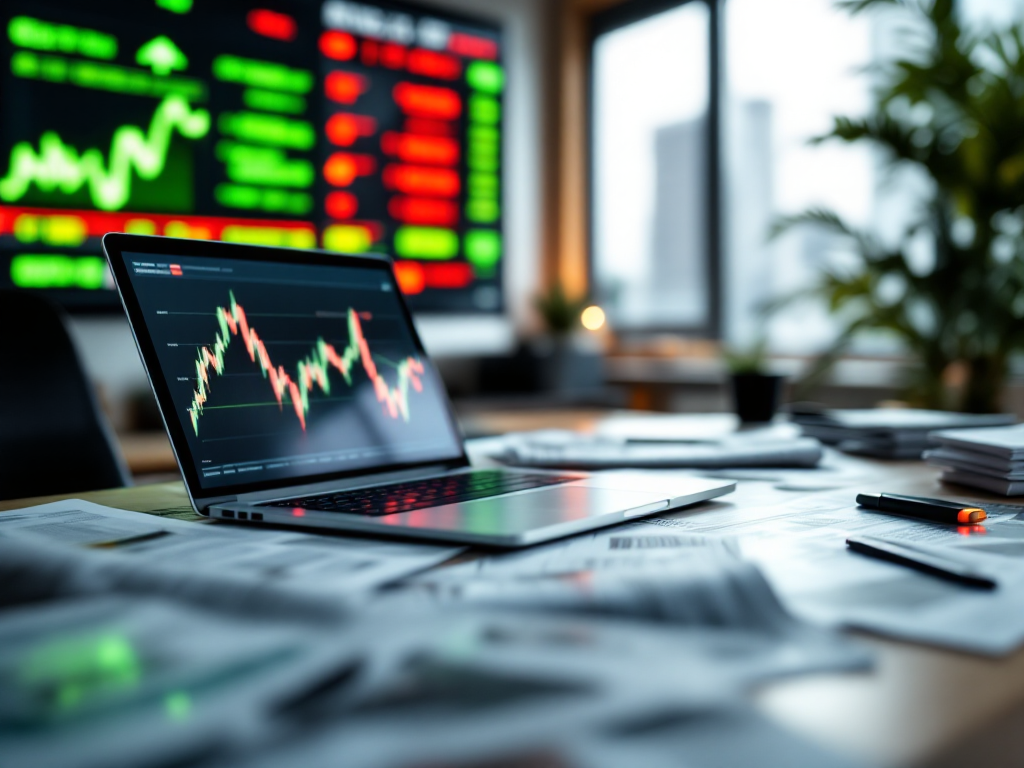US Market Gains Fueled by Tariff Changes and Strategic Moves
The US financial markets experienced significant enthusiasm following recent tariff policy adjustments announced by President Donald Trump, which include a 90-day pause on tariffs in non-retaliatory regions and an increase to 125% on Chinese imports. Immediately following the announcement, investor sentiment notably improved, boosting major financial institutions such as Goldman Sachs and BlackRock and sparking a bullish response from the broader equities and cryptocurrency sectors.
Goldman Sachs saw its stock price rise by approximately 12%, a surge widely attributed to an optimistic update on its recession outlook. Analysts noted that this outlook improvement served as a positive signal for investors, leading to increased confidence in market stability and long-term growth. Similarly, BlackRock experienced a noteworthy 10% stock increase, driven by its recent strategic investment in the Adani Group, which positioned it well amidst the evolving tariff landscape.
ETFs also experienced substantial inflows totaling $17.2 billion shortly after the tariff announcement. Despite modest outflows of $591 million reported following consecutive days of inflows, these numbers reflect fluctuating investor sentiments across various economic sectors. Notably, the SPDR S&P 500 ETF (SPY) and Vanguard S&P 500 ETF (VOO) recorded significant activity, underscoring the preference for large index funds during uncertain market conditions.
“The substantial inflows into ETFs are indicative of a broader investor strategy to navigate volatility by diversifying through index-based investment vehicles,” explained financial analyst Susan Carter from Morningstar.
Meanwhile, the effect of tariff pauses rippled positively across other market sectors such as real estate and cryptocurrency, where the Philadelphia Housing Index climbed 6.7%, indicating renewed optimism in the property market. Bitcoin also benefited substantially, reaching a notable trading price of $82,385, marking a noteworthy rise reflective of renewed investor interest in digital assets amid tariff-driven market changes.
European and UK ETFs Struggle Amid Tariff Volatility
Contrary to the positive reactions observed in US markets, several European and UK-focused funds and ETFs experienced significant downturns amidst the tariff-induced market volatility. Over the past week, losses among Europe-available investment vehicles ranged from 15% to nearly 19%, underscoring the severity of market reactions within specific sectors like energy commodities and natural resources.
CoinShares XBT Provider ETHEREUM XBTE, a prominent crypto tracker fund based in Europe, suffered the largest decline, losing approximately 18.68% in just one week. This particular fund, valued at £207 million, has encountered ongoing volatility, registering a dramatic 60% fall since the beginning of this year and revealing a challenging annualized loss rate of 25% over the past three years.
Alongside cryptocurrency, natural resource funds and energy equity ETFs were significantly impacted. Baillie Gifford Worldwide Long Term Global Growth, a prominent investment fund, declined 15.42% within a week, marking an accumulative loss of over 20% for the year. Such pronounced downturns reflect investor caution and the direct economic implications that varying tariff rates have on international trade and commodities.
“Investors in Europe are finding themselves caught in the crossfire of global tariff volatility, making portfolio diversification and risk management more critical than ever,” commented investment strategist Markus Fischer from Dexia Investor Services.
While the US market appears buoyed by strategic inflows and well-positioned financial giants, the European ETF market indicates heightened sensitivity to trade disruptions, highlighting a clear disparity in how different global markets absorb international economic policy shifts.
Broader Implications and Future Outlook Amid Tariff Adjustments
The recent tariff adjustments announced by the US government are reshaping the dynamics of international trade and global supply chains. Policy experts suggest that an increase in tariffs on Chinese goods, coupled with a temporary easing for non-retaliatory regions, could redefine global economic relations and trade policies moving forward.
Economists anticipate that these developments might lead to new market opportunities for certain regions, particularly those benefiting from lowered tariffs, while simultaneously imposing economic pressure on markets heavily reliant on Chinese imports. This dual nature of tariff policy creates a complex global trade scenario, which requires investors and multinational organizations to swiftly adapt to maintain resilience and profitability.
This policy shift is expected to encourage companies to seek alternative supply routes and new trading partnerships, potentially benefiting emerging markets and regions positioned favorably under the new tariff conditions. Concurrently, the significant impact on European ETFs signals a cautionary note, suggesting ongoing volatility and stress in sectors deeply embedded in current global supply chain structures.
Additionally, financial advisors suggest that the recent stock price gains by major firms like Goldman Sachs and BlackRock could continue in the short term, as these companies are strategically positioned to capitalize on financial flows and market adjustments triggered by tariff changes.
“Moving forward, investors and businesses must be vigilant, continually monitoring policy developments and adapting their strategies to thrive in this dynamic environment,” advised Rachel Spencer, a senior economist at the International Economic Forum.
In summary, while the US market reflects a heightened degree of optimism and resilience due to strategic inflows and improved economic indicators, the European market highlights the inherent risk and volatility introduced by significant tariff shifts. The evolving landscape underscores the importance of diversification and strategic flexibility amidst continuing economic uncertainty.


